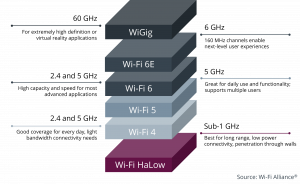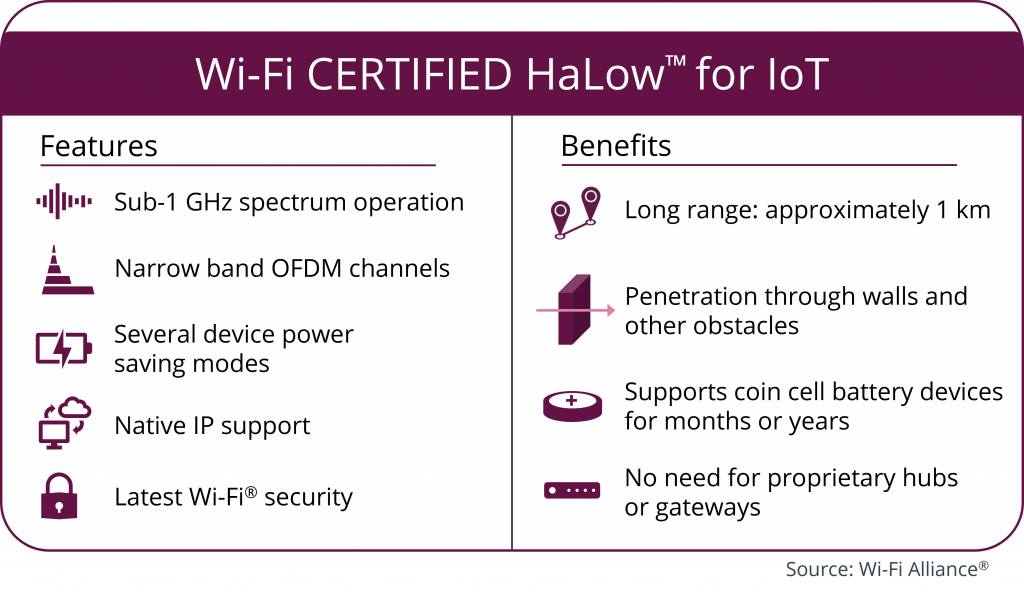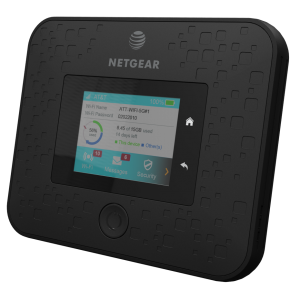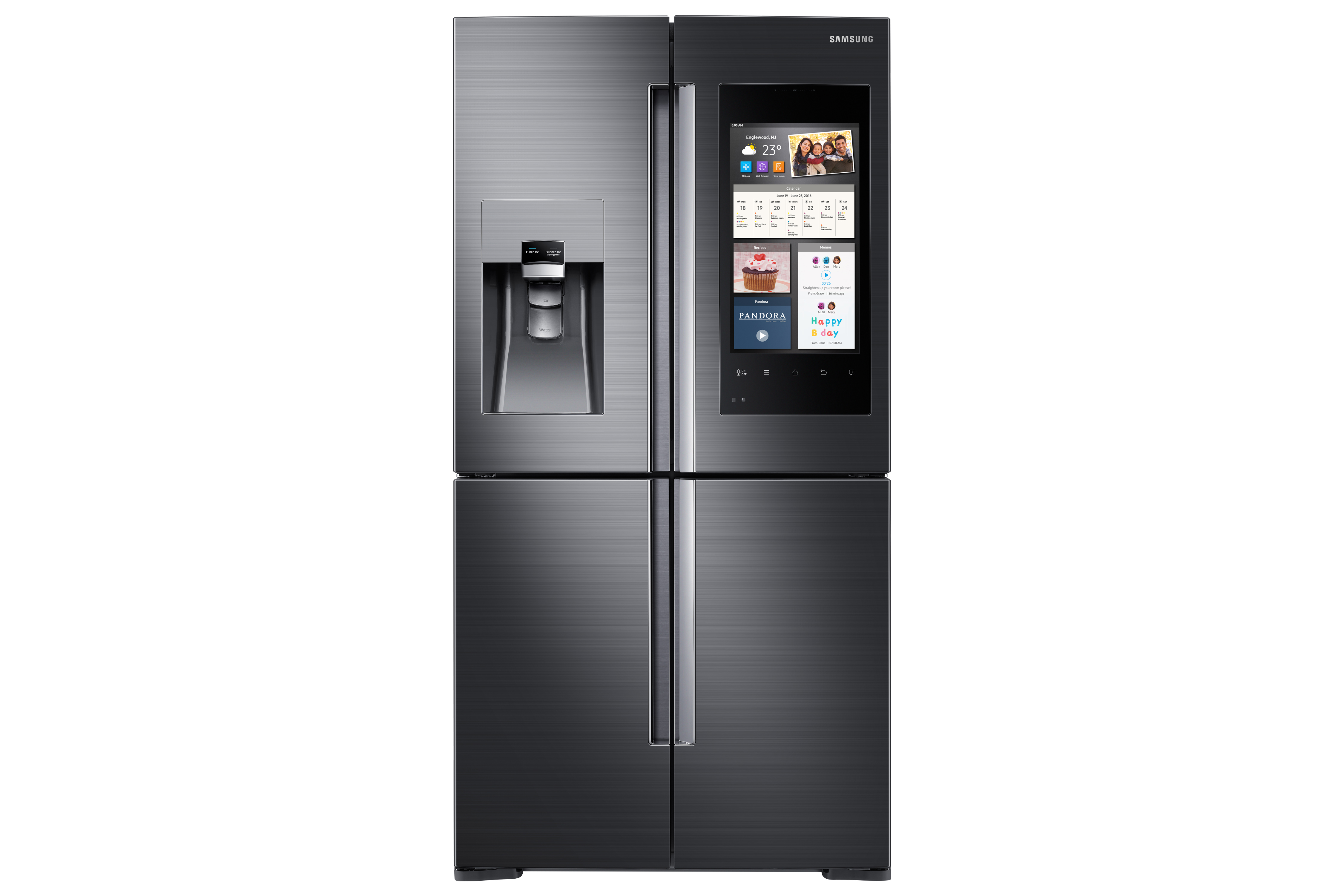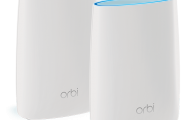Articles
‘The Wi-Fi portfolio is unmatched’: Wi-Fi Alliance on Wi-Fi Certified HaLow (rcrwireless.com)
Wi-Fi HaLow could be the next IoT enabler – TechRepublic
From the horse’s mouth
Wi-Fi Alliance
Wi-Fi CERTIFIED HaLow™ delivers long range, low power Wi-Fi® | Wi-Fi Alliance
Wi-Fi CERTIFIED HaLow (Product Page)
My Comments
A Wi-Fi network technology that is being put on the map at the moment is Wi-Fi CERTIFIED HaLow a.k.a Wi-Fi Halow.
This network technology is based on IEEE 802.11ah wireless network technology and works on the 900MHz waveband. It is about long-range operation of approximately 1 kilometre from the access point and very low power operation that allows devices to run for a year on commodity batteries like a single 3V coin-size cell or a pair of AA-size Duracells.
The power requirement may be a non-issue for devices like HVAC thermostats that are wired to the heating system they control. But they may be an issue with devices like movement sensors or smart locks that are dependent on their own battery power. As well, the low power requirements that Wi-Fi HaLow offer could be of benefit towards devices that implement energy-harvesting technology like solar power or kinetic energy.
This low-bandwidth Wi-Fi specification is intended to complement the other Wi-Fi specifications used with your home or business network. But it is focused towards the Internet of Everything especially where the devices are to be operated across a wide radius like a farm or campus.
The network topography for a Wi-Fi HaLow network segment will be very similar to the standard Wi-Fi network. That is where multiple client devices link to an access point, but there should be the ability for a mobile device to roam between access points associated with the same Wi-Fi network.
Compared to the likes of 802.15 Zigbee, Z-Wave, DECT-ULE, Bluetooth LE and similar Internet-of-Things wireless technologies, this is meant to avoid the need for special routers when there is a desire to link them to IP-based networks.
This is because this technology effectively uses the same protocol stack as our Wi-Fi networks save for the layers associated with the radio medium. It also means that the same security, connectivity and quality-of-service protocols that are part of Wi-Fi nowadays like EasyConnect and WPA3 can be implemented in Wi-Fi HaLow devices.
At the moment, you would need to use a Wi-Fi HaLow access point to get any Internet-of-Things devices on to your network and the Internet. It may be a small device that plugs in to your existing home network router or network infrastructure. But a subsequent Wi-Fi access point or router design could have built-in support for this standard thus making it more ubiquitous.
The use cases being positioned for Wi-Fi HaLow technology would encompass the smart home, the smart building and the smart city where all sorts of “Internet-of-Things” devices are acting as controllers or sensors. It is also encompassing vertical use cases like agriculture, industry and medicine where sensors come in to play here.
At the moment, this kind of connectivity will exist as an alternative to Zigbee, Z-Wave and similar technologies especially where IP-level connectivity and functionality is wanted at the device. It may not have ready appeal in use cases where a direct connection to Internet-based technology may not be required.
On the other hand, a use case could allow for a “hub and spoke” approach to the Internet of Things where a device can connect to accessory peripheral devices using Zigbee or Bluetooth but link to the home network and Internet via WI-Fi HaLow. An example of this could be a retrofit-install smart lock which supports the use of accessory input devices like keypads, NFC card/fob readers and contact sensors.
Wi-Fi HaLow could be seen as a direction towards capable low-power long-distance wireless networking for Internet of Things, especially where direct Internet / LAN network connectivity is desired out of the application.

